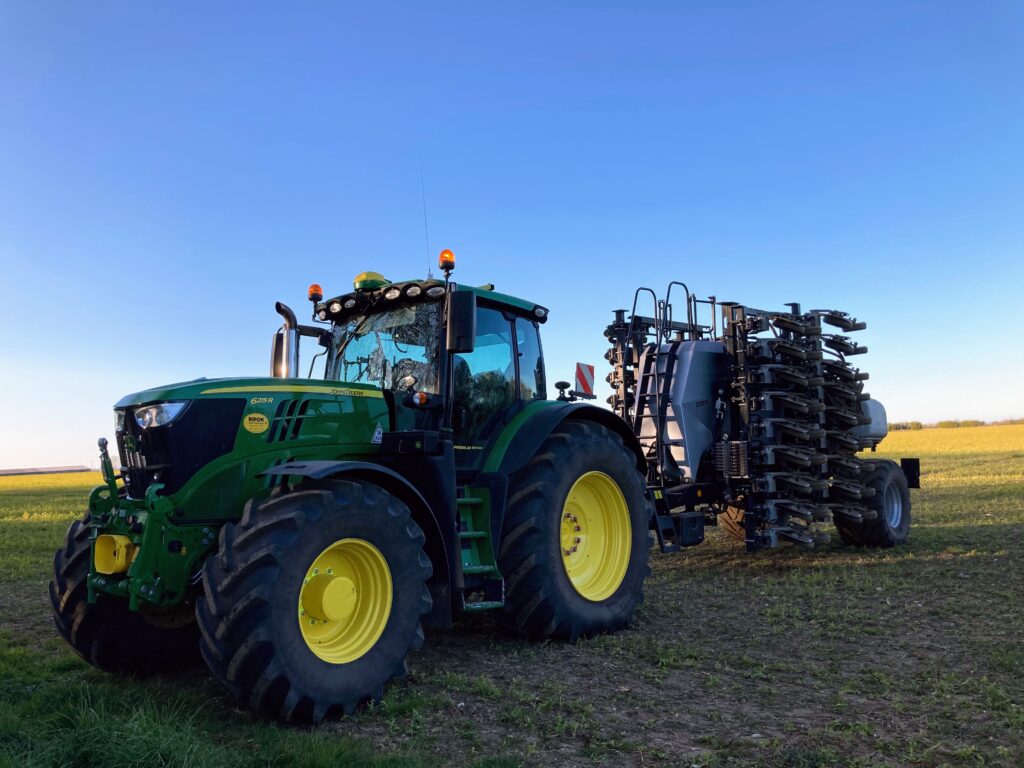September 2024
Another year has passed and although I am without doubt a bit older, hopefully I am a little wiser from all the errors that I have made. We have tried to devise a rotation based around predominantly first wheats, interrupted with break crops of grass seed (down for two and a half years and grazed in the winter periods), OSR and this year for the first time, spring beans and BOATS (spring oats sown alongside spring beans). Although we were confronted with a wet autumn, we have a low grass weed burden which enabled us to press on with the autumn drilling, we used our own seed, a ten-way soft wheat blend and took it straight out of the shed (rightly or wrongly). Our six metre Horizon drill, operated by my daughter Anna went well and although I would have liked to have tried to place some liquid biologicals alongside the seed, last autumn did not allow the time to be trialling.
We successfully sowed all our seed before the heavens really opened. Throughout the wet winter period, I was asked whether, because we had direct drilled and not cultivated to take out any compaction, then surely our fields must be full of puddles, the answer was ,there were no puddles apart from one or two parts of historically compacted tramlines on better bodied soils. This free draining soil, represented the results of four years drilling and levelling the fields with a Sumo DTS, followed by four years using a direct drill, no cultivations, just putting faith in the system.
Anna and to a lesser extent myself, appear in the film Six Inches of Soil. This had been three years in the making and we attended the first viewing in December in Cambridge.

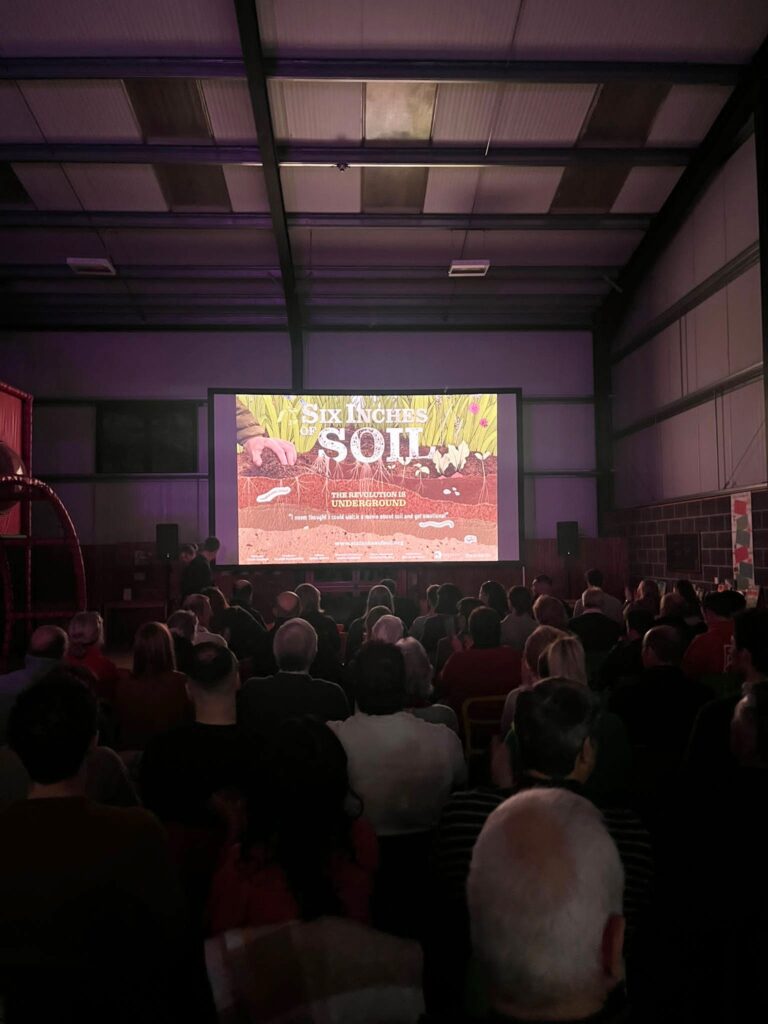
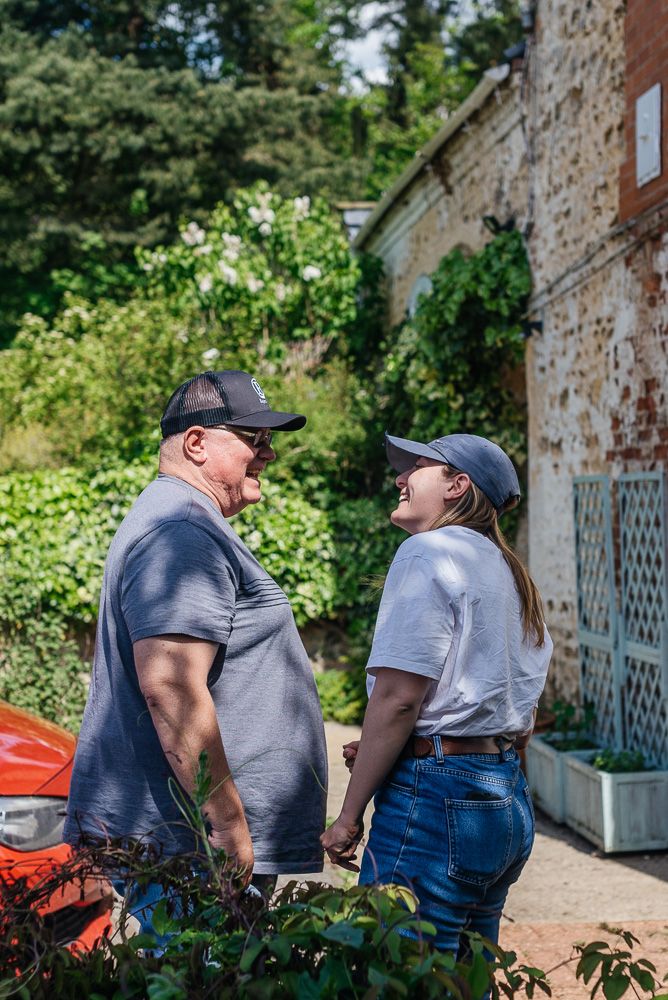
We attended the first public viewing at the Oxford Real Farming Conference. Prior to the viewing we enjoyed a beer with Tim Parton, this was shortly before his horrific accident. I am sure that you will all join me in wishing Tim a speedy recovery in his adjustment back to his farming life.
We also had a film viewing in our play barn at the Pink Pig Farm. This was for me particularly nerve racking because my farm and its system was being judged by many of my farming friends on the big screen. I sat at the back and knowing that I would be answering questions on a panel after the film, I filled myself with Dutch courage maybe excessively! Needless to say, I have not been asked to sit on a post film panel since. Anna and I have attended other viewings at York and John Pawsey’s farm in Suffolk, all the viewings were well received and followed up by a plethora of questions for the panel.
We finally completed the foliar nitrogen plant. Within the plant we have a twenty-five thousand litre tank which can be filled with rainwater to the required level and then urea and sulphur are added to a specified recipe, the contents of the tank are agitated for twelve to twenty-four hours, depending on the ambient temperature, then the finished product can be pumped into one of three twenty thousand litre storage tanks.
I have an eighty thousand litre rainwater tank sited outside the building to capture rainwater and since the recipe specifies soft water, I was particularly concerned that the collection from the gutters would not supply enough. I need not have worried, after that wet winter, I have even had to fill one of my fertiliser storage tanks with the precious, soft rainwater. I should add that we had to bund the whole building and simultaneously we relocated our chemical store to enable the whole mixing and storage operation to take place under cover. We would like to thank Anglian Water for a grant which contributed to the cost.
On the day of foliar fertiliser application, we then add in biologicals such as Fish hydrolysate, molasses and Hutchinson’s Humagro, all is applied at one hundred litres per hectare which means that we can cover some ground quickly. No scorch was apparent; however, we did endeavour to apply early in the mornings. The theory of applying foliar nitrogen as opposed to soil applied nitrogen is that it is up to four times more efficient, therefore allowing for a reduction in application rates accompanied by financial savings of home mixing and using less product. Amendments, such as magnesium and manganese can be added when sap tests dictate. The wheats crops were also treated with Sycon as a fungicide replacement, eventually the disease pressure was so high that we had to apply a normal fungicide in the latter growth stages.
The spring beans had always been planned and were grown on contract for seed for Limagrain, for many farmers spring beans were sown because of the wet autumn and winter. We also tried BOATS, apart from one trace element application, they received no fertiliser, herbicide, or fungicide products and may be suitable for a premium market outlet. Following a three-year break of two years of grass and one year of OSR or Beans, we were able to grow a crop of Basic Typhoon seed for Limagrain, but we requested no seed dressing, this action also allowed us to spread our risk of growing 100% home saved seed.
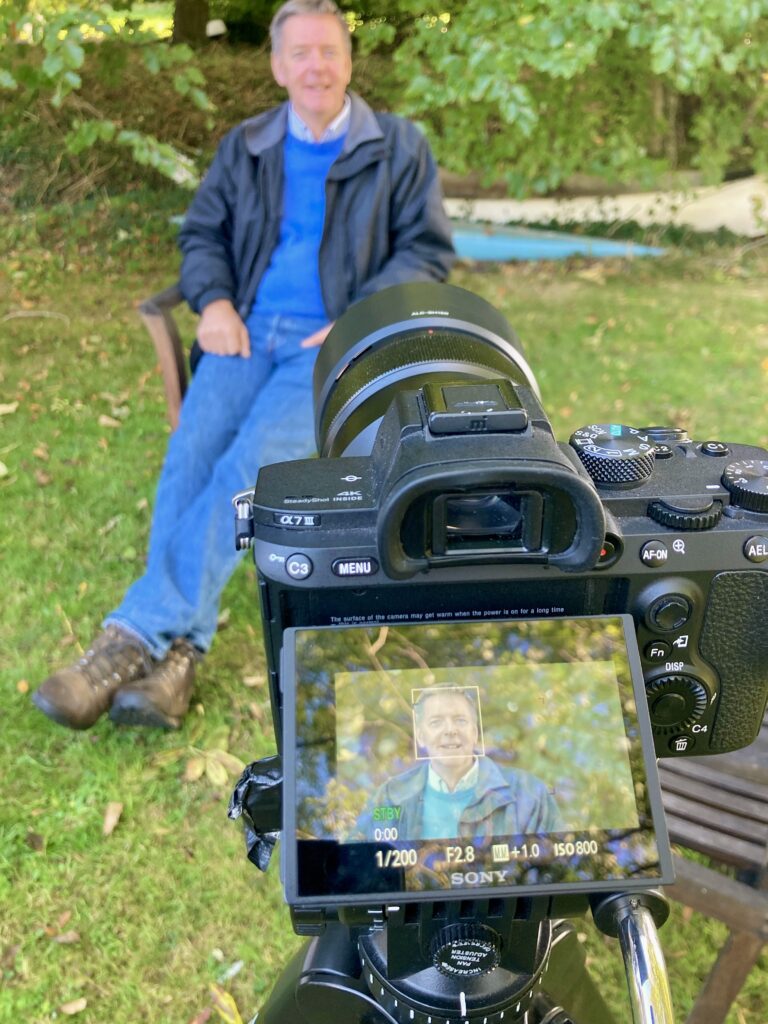
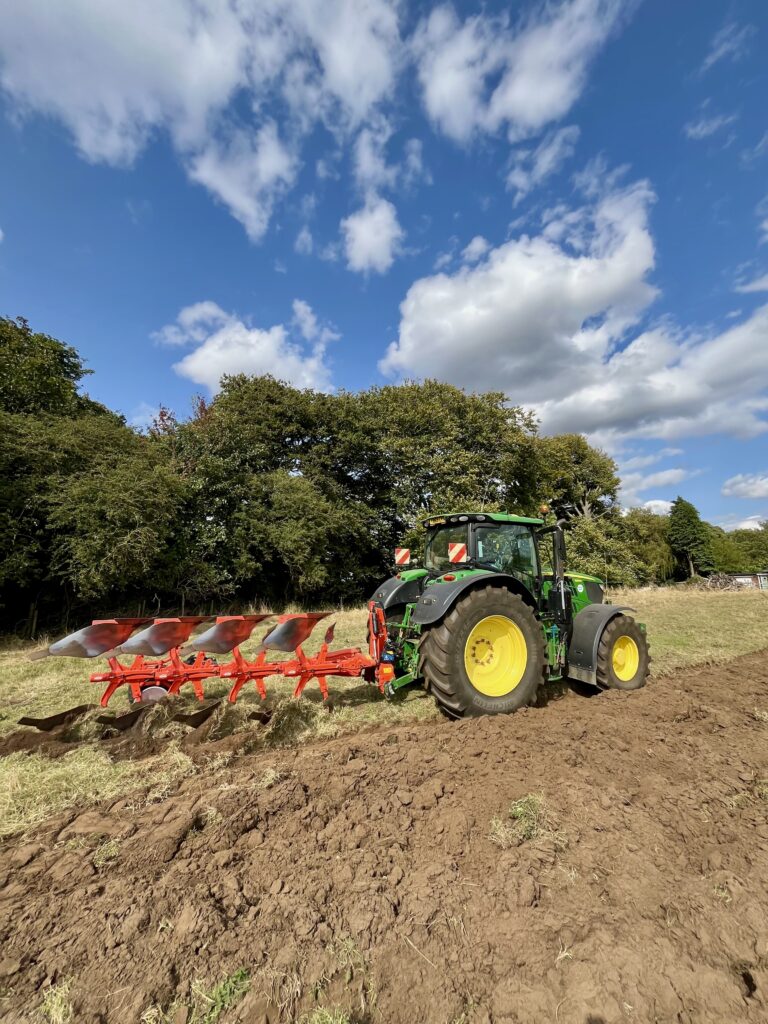
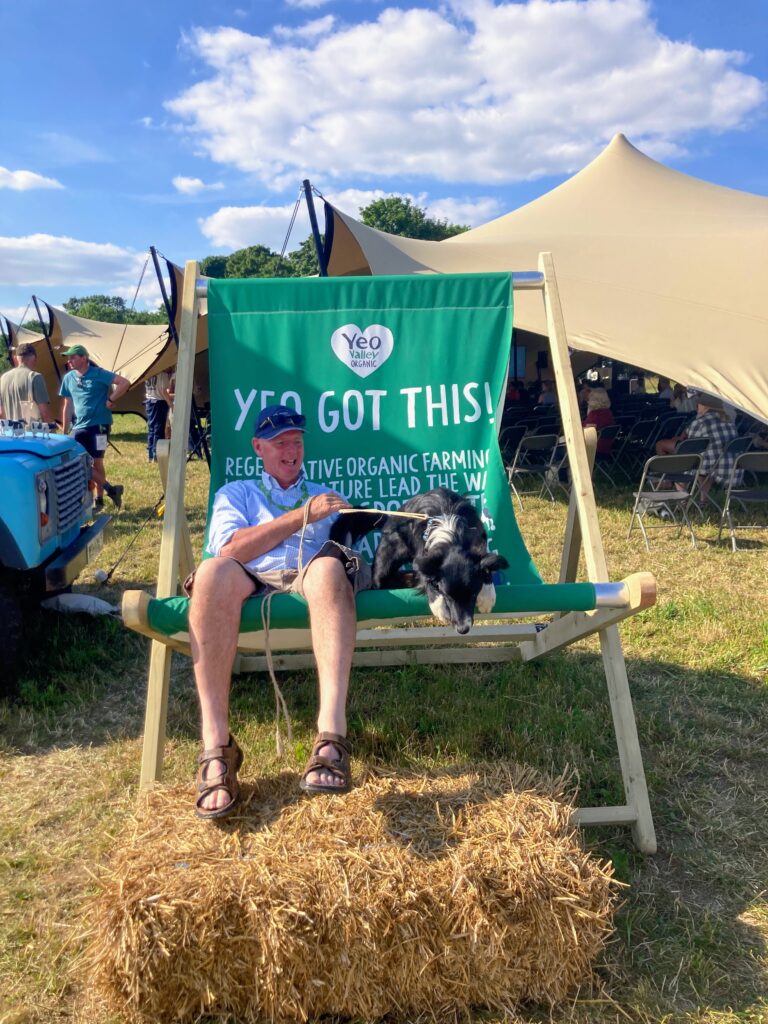
I attended Groundswell with the aim of investigating three topics: adding value to my grain, robotic camera guided hoes and Exlana sheep. I came away having decided that I would try Wildfarmed wheat, if its happening on Clarkson’s farm ,then it probably should happen on mine. Although the SFI pay reasonable rewards for interrow hoeing and there are grants to buy the hoe, two things are holding me back, firstly if I could achieve an understory of clover or indeed lucerne, then it may not be easy or desirable to inter row hoe and secondly, I cannot believe the price of the hoes. Have they pumped up the price on the back of the government incentives? Every year our sheep enterprise is confronted with fly strike, shearing costs and bags of wool with very low value. At Groundswell I visited the Exlana stand and concluded that going forward we should run wool shedding sheep , such as Exlanas, I just must convince my daughter.
By completing two Carbon Calculators, I have come out just about carbon neutral and consequently I have been approached to become a Climate demonstration farm, I attended a webinar in relation to this which was presenting thoughts and theories from lecturers from a selection of European Universities. What they said could have been straight out of a presentation from thirty years ago. It’s so concerning that the educational institutions do not appear to have moved with the times.
More encouraging was an excellent conference at Downing College Cambridge, it was organised by a group of trusts, being predominantly driven by members of the Sainsbury family, who are themselves farming regeneratively. The conference had the aim of creating more collaboration between the scientists (educational institutes), the farmers and the city institutions who might fund research on our behalf. Once again, the scientific community only like to measure one or two variables in a single trial. I stood up and explained the multitude of changes which have taken place on my farm in a relatively short period of time, I fear that I am acting on hope and blind faith, using and adapting research from other countries around the world, in the absence of any meaningful research in the UK. One very positive presentation came from Ruth Wade who, in conjunction with a cluster of Yorkshire farmers is carrying out some more relative trials work at Leeds University, albeit she is about to run out of funding.
After years of growing Birds Eye peas in a six-year rotation, our farm has become pea sick with foot rot, regrettably the system was not as sustainable as we thought, or was it the decades of ploughing?. We now rent land for peas and this year, due to the weather conditions and the fact that I refused to plough, (instead I had Sumo trio ’ed the field, leaving some surface trash), I was asked to direct drill the peas, this went reasonably well considering that direct drills do not really like cultivated soils. However, my field was hit by every pigeon in the territory and given that margins are quite tight on rented land, after forty years of being a Birds Eye pea grower, I have given notice to quit growing peas. I also had poor OSR yields, part of this might have been seasonal, however I do believe that OSR is quite a weak rooter, and I have struggled to get outstanding OSR crops from direct drilling, so out of the window goes the OSR also.
For years I have operated Gatekeeper, and I guess that I have learnt to live with its clunkiness, Anna will not work with Gatekeeper, she said that it is back in the ark, so we are changing to the Hutchinson crop recording package Omnia, and she will be in the driving seat for that product.
We have tried various actions with our direct drilling to establish an herbal ley into existing grassland, all have failed, so this year we have had to hire/borrow a plough and two of my children were taught the acquired skill of how to plough. The herbal ley seed was then sown into the blacked over soil and we eagerly await emergence.
I have been in the SFI pilot which is coming to an end soon and so I have been reviewing the options of the 2024 SFI Scheme. It may come as no surprise that being a regenerative farmer, I will be able to tick so many more boxes than my conventional neighbours. It seems likely that the Wildfarmed area may be eligible for the low input cereal option, on those grounds BOATS could also qualify, therefore enabling BOATS to become a viable break crop, which may replace OSR in the rotation.
Our wedding barn diversification has gone well for two summer seasons, which is just as well because both of my daughters have announced their engagements this summer. Carl and Anna announced their engagement in May, on the weekend of the engagement, it had been suggested by Claire Mackenzie that Anna might want to go to London to promote the Six Inches of Soil book at a book signing. The event would take place alongside Gabe Brown, who would be in the UK, not only to promote his book, but on other business. I explained to Claire that I had prior knowledge of Anna’s forthcoming engagement, and that Anna would not be available to go to London. A plan was then hatched (not by me), to drive Gabe straight from Heathrow to Scunthorpe, with the intention of giving Anna a second surprise for that weekend. This cunning plan was implemented and we hosted Gabe and his colleagues to a brief farm walk and a Barbeque, on which turned out to be, one of the most idyllic of May days that you could possibly imagine, Gabe might have been a bit jet lagged, but wow, who would have told me back in 2016, when I read Dirt to Soil, that I would be entertaining its author in my garden, eight years later?


